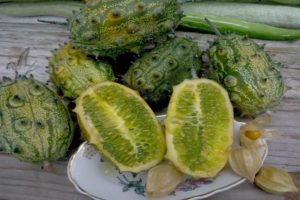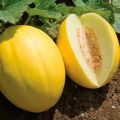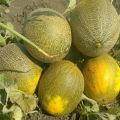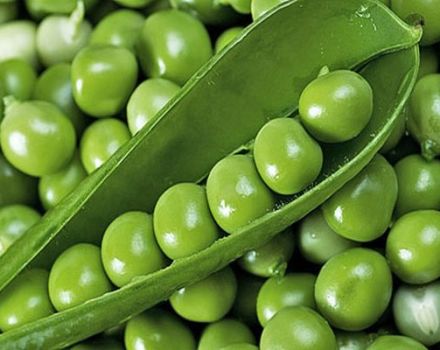Description of the Gulabi melon variety, cultivation and care, selection rules
Melon Gulyabi comes from Central Asia; gardeners often call it Chardzhuy. The name is associated with the area in which the variety was bred. Today the culture has spread to other territories and is cultivated in neighboring republics.
The plant belongs to the late-ripening category of varieties. In arid warm regions, it takes an average of 130 days from germination to full ripening. Gardeners note the rich melon aroma of the fruit, which manifests itself in full force several weeks after harvest.
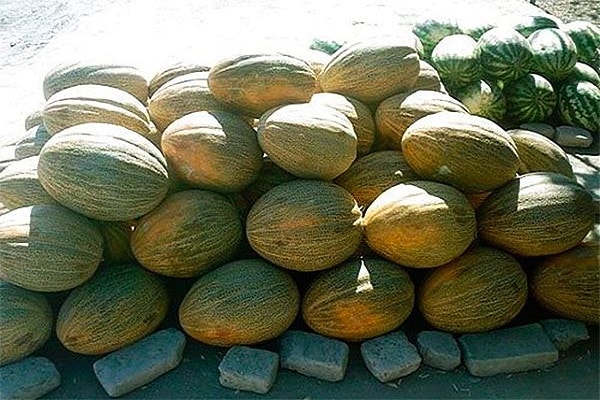
Fruit characteristics
The appearance of the fruit can vary significantly depending on the particular variety. The color can take on the traditional yellow or orange color. Some varieties have an unusual greenish and even white skin. The surface of the fruit differs from the type of plant. Varieties with a warm color are characterized by an openwork, mesh pattern. Greenish and white fruits have little wrinkling and pronounced stripes.
Melon variety Gulyabi is characterized by an elongated ovoid shape of the fruit. When grown in warm climates, the average fruit weight varies from 4 to 8 kg. When grown in the climate of medium-sized Russian regions, the indicator is somewhat more modest and reaches 3 kg.
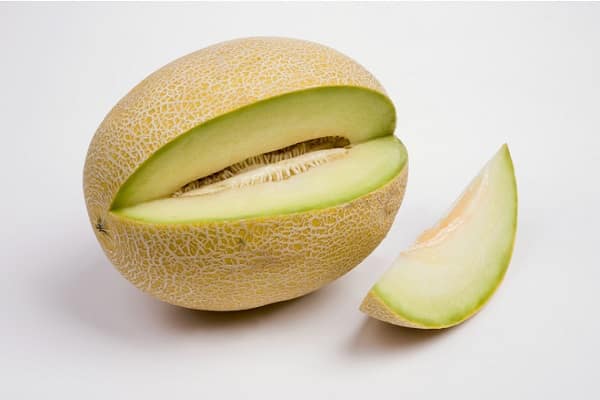
All types of culture are distinguished by dense pulp. At the time of ripening, the structure is crispy, but after a couple of weeks it acquires softness, juiciness and an extraordinary aroma. Fruit taste and appearance are preserved during long-term storage, and honey flavor is present due to the significant content of carotene and sugar.
What varieties exist
Along with the variety of the Chardzhui variety, other types of crops are presented on the market. The most popular varieties are the following:

- Chok - has an absolutely smooth surface, juicy fibrous pulp.
- Gulabi 803 - actively grown in Turkmenistan, has a bright yellow rind, juicy crispy flesh.
- Bovaldi - the variety has a green color of fruits with pronounced stripes, their weight reaches 3-5 kg, the fruits are characterized by white fibrous juicy pulp.
- Sary-Gulyabi is a melon with a characteristic yellow-orange peel color and a coarse mesh on the surface; the thick pulp, buttery to the touch, has a rich sweet taste due to its high sugar content.
Among all varieties of melon Gulyabi, the Orange variety stands out, from the name of which you can immediately understand its main feature. The plant has a shorter ripening period and the first harvest can be removed after 100-100 days.Despite the shorter ripening period, the fruits can be consumed only after several weeks of maturation, when they "reach" the state of readiness.

Disadvantages and advantages of the variety
The only drawback of melon is the difficulty of growing it in difficult climatic conditions. When grown outdoors, the plant lacks heat and light. Even minor changes in temperature have a negative effect on plant growth. When planted in greenhouses, the crop is characterized by poor growth and yield of fruits, which is associated with a lack of sunlight.
The dignity of the variety includes not only the excellent taste of the fruit, but also their composition.
Among the many representatives of melon cultures, Gulyabi favorably differs with a high content of vitamins and minerals, which ensures its useful and healing properties. Melon is considered one of the best foods for replenishing vitamin deficiencies in the body. Eating the pulp contributes to the overall health benefits, increased immunity and improved body resistance.

A significant advantage is the ability of the fruit for long-term storage without loss of taste and usefulness of the product. This feature allows you to enjoy a delicious treat and replenish the lack of vitamins in the cold seasons of the year, when there is a lack of fresh vegetables and fruits.
Thanks to the modern recipe variety and unusually rich taste and aroma of melon, this product is widely used in cooking today. First and second courses, sweets and dried fruits are made from it. The product slightly loses the usefulness of its composition when frozen.
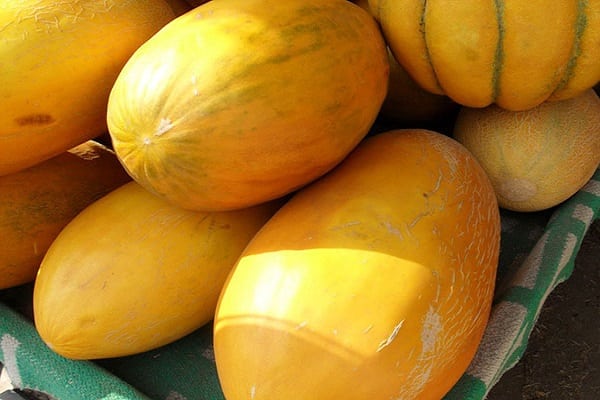
How to choose a melon?
For many Russian citizens, the question of choosing the right melon is difficult. This is due to the large variety of modern varieties and the lack of the necessary experience, since the fruits have to be selected only during the period of bringing the crop from warm countries. At the same time, there are a number of rules, observing which it is impossible to make a mistake with the right choice. The following points indicate the ripeness of the fruit:
- the aroma is rich, has a pronounced melon smell, which indicates the full ripeness of the fruit;
- the stem of the fruit has a dense structure with a grayish tinge, a little withered, and the presence of a green stalk indicates early removal of the fruit and the risk of acquiring an immature melon;
- the surface of the peel has no defects in the form of dents and chips;
- the peel is plastic and bends under the pressure of the finger.
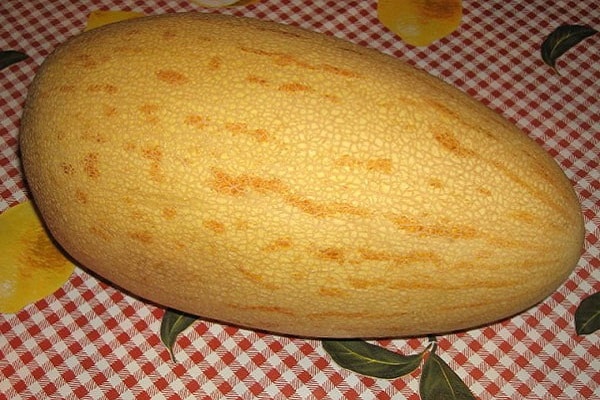
A sign of melon ripeness is the presence of an even color of the fruit. The presence of one lighter spot is allowed due to its contact with the earth's surface and receiving less sunlight. When tapping a ripe melon, characteristic dull sounds are heard.
When purchasing an unripe melon, you should not be upset and worried. In this case, it is enough to remove the fruit for several days in a dark, dry room. Due to the ability of the culture to ripen during storage, after a week the taste of the pulp will improve significantly.

